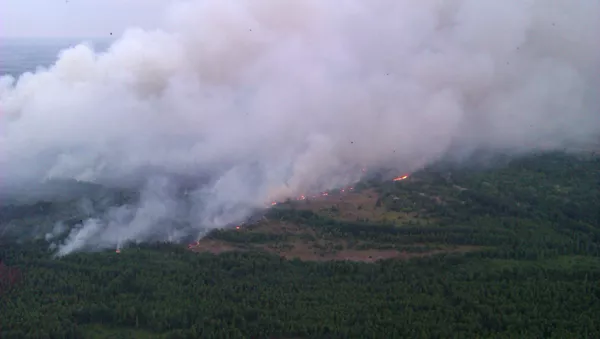During the course of the radiological survey, which is undertaken regularly at 39 control points in the exclusion zone, staff at the Chernobyl Specialized Enterprise found "no significant increase in the gamma exposure dose rate or beta-particle flux density," at six control points, including at Poleskoye.
On Monday, Ukrainian emergency services announced that 27 fire engines and 192 firefighters were fighting a blaze close to the Chernobyl nuclear power plant, after dry grass caught fire and led to a forest fire covering an area of around 130 hectares.
According to a statement from the emergency services, the closest of the six fires was burning tens of kilometers away from the power plant, and did not pose an immediate risk to the plant.
On Tuesday the authorities updated that firefighters had been able to contain four of the six sources of the wildfire, and reduce the area of the fire to 110 hectares.

Explosions at the fourth reactor of the Chernobyl nuclear power plant on April 26, 1986 released considerable amounts of radioactive material into the environment, mainly the radioisotopes iodine-131, caesium-134 and caesium-137.
Iodine-131 has a short radioactive half-life of eight days, though it can be transferred to humans relatively rapidly. Caesium-134 has a half-life of 2 years, while that of caesium-137 is 30 years.
In response to the accident, in 1986 around 115,000 people were evacuated from areas surrounding the reactor, which was destroyed during the catastrophe, and after 1986 another 220,000 people were subsequently evacuated from adjacent parts of Ukraine, Belarus and Russia.






